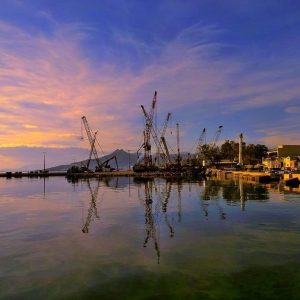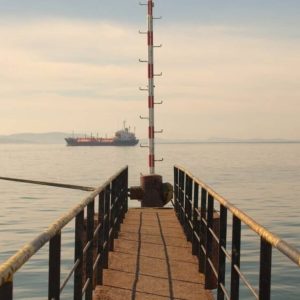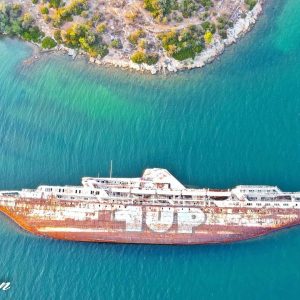Elefsina “Eleusis”

Eleusis, the city of the Eleusinian Mysteries and birthplace of Aeschylus, is a municipality of Attica and seat of the Western Attica Regional Unit , located approximately 20 km from the center of Athens in the Thriasian Field . It is located to the west of Athens, at an altitude of 5, on the shores of the gulf of the same name, at the site of ancient Eleusis. It has an area of 36,589 sq. km. and a population of 29,902 inhabitants, according to the 2011 census . In ancient times , Eleusis was, together with Athens , Olympia , Delphi and Delos , the 5 holy cities of Ancient Greece , and the Sacred Way ended in it .
The city was named European Capital of Culture for the year 2023. Today it is one of the largest industrial centers of the country. The industrial area of Elefsina includes some of the main Greek industries, such as steel complex, oil refinery, metal processing industries, cement industry, food processing factories, agricultural products, plastics, furniture, leather, non-metallic minerals processing, textile industries, clothing, beverages, papermaking, etc.














Ancient times
To the sanctuary of Demeter and Koris and to the Eleusinian Mysteries, Eleusis mainly owes its importance in Antiquity. That is why its history is intertwined with the history of the sanctuary. The city was built on the eastern hill of a low two-peaked hill range at the southwestern end of the Triasian plain, the large, that is, fertile plain that is open to the south to the sea, while on the other three sides it is limited by the mountains of Aigaleo, Parnitha and Kithairona. The geographical position of Eleusis, opposite Salamis and on the crossroads that connected Athens with N. Greece and the Peloponnese, contributed to its development.
The excavations, combined with the philological evidence, revealed to us the history of the city and the sanctuary. temple of Demeter.
Eleusinian Mysteries.
The most important sanctuary of Demeter and her daughter Kori (Persephone) was at Eleusis. In this city the Great Eleusinian Mysteries were celebrated, which were related to the sowing, sprouting and harvesting of wheat. The life cycle of the grain crop, depicted in the myth of the Maiden, was thought to parallel the cycle of human life. This myth, narrated in the Homeric hymn to Demeter, was represented in every detail during the celebration of the Eleusinians. As in myth the Maiden was kidnapped to marry Hades and give birth to Pluto, so the wheat was scattered in the fields and buried in the soil, to create the new life. Just as wheat grew through the ground and was harvested to provide food for man and be used as seed, correspondingly a young girl was taken from her parents and “killed” her virginity, so that the new generation would be born. And when someone died, he was buried in the earth, to secretly participate in the cyclical renewal of life. This was the message of Eleusis: from every grave springs new life. for the mystics there are “certain hopes” of a blissful immortality after physical death.
What to visit
• Archaeological Museum
• Arch aeological site
• History and Folklore Museum of Elefsina’s Asia Minor Society
• Saint Zacharias
• Railway station
• Industrial buildings
• Roman Bridge
• Western Necrot cemetery
• Hadrian let him Aeschylus
